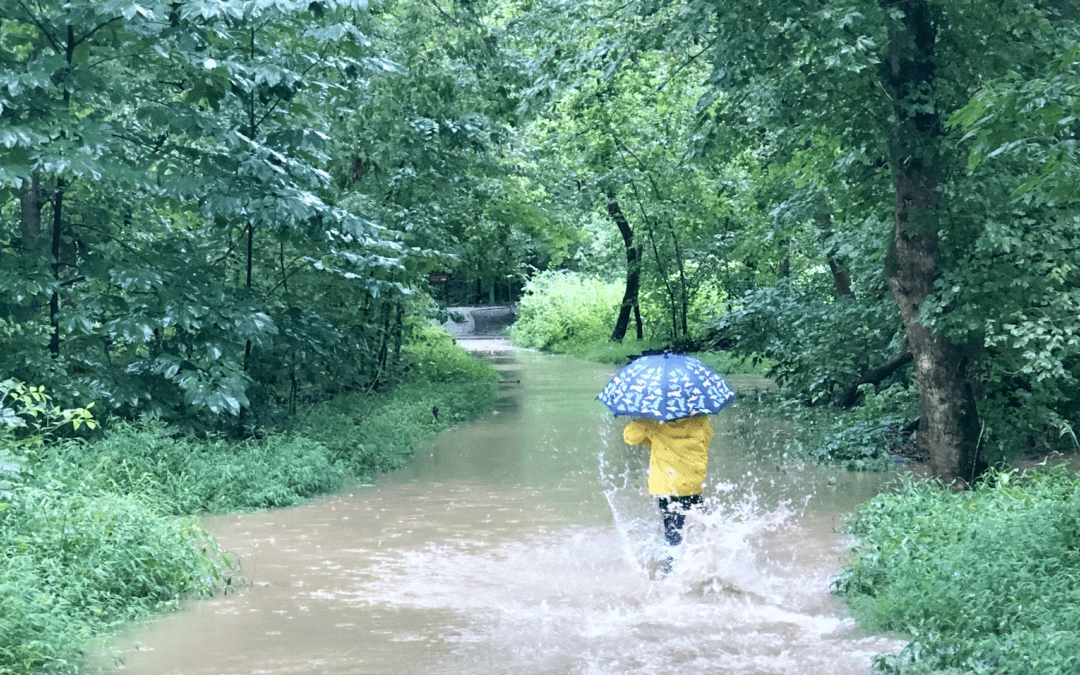The State of New York currently has a Request for Proposals available for an administrator of a loan fund for a new residential loan program called Resilient Retrofits. Since this week is also when the world is meeting in Glasgow, Scotland to discuss climate change, talking about this RFP and resilience, in general, feels quite appropriate.
The Resilient Retrofits will provide loan funds to homeowners in New York that have been impacted by flooding. The loan program is intended to help pay the cost of mothballing space in existing homes that is subject to flooding in the future AND to improve the energy performance of the home as part of the effort to stem global warming.
There are standards for home design specific to flood-prone areas called Flood-Proofing. Essentially, they require that all habitable spaces in a home be elevated above the flood danger elevation and that all mechanical systems such as water heaters, furnaces, and central A/C units be raised out of the flood danger zone, generally by placing them in attics. Following flood events in rural New York, we have seen homes raised up on piling systems to avoid being damaged in future floods, much as you would see with beachfront homes at the shore. In some jurisdictions, homes that have suffered a flood must be elevated two feet above the flood level.
Of course, the existential question is “How high is high enough?” Who is to say that the flood level from the last occurrence will be the maximum elevation reached by the floodwaters during the next flood? A fundamental truth about flooding in New York in the past decade or so is that floods have occurred in neighborhoods that have never flooded before. This means that there will routinely be families impacted by a flood who do not have flood insurance coverage, and if their home was not located in a FEMA flood zone, may not have been able to even purchase flood insurance. One of FEMA’s prime strategies is to buy out homeowners living in flood-prone areas, tearing down the homes, and leaving the lots as forever green space. This saves flood insurance agencies from having to pay out again and again as areas repeatedly flood, and homeowners insist on rebuilding in the same spot, usually because they prioritize being near the water.
Because of the uncertainty of where the next flood might hit, there is a calculus that suggests it is best to start incorporating floodproofing design into any home renovation work. If you are putting in a new heating system or water heater, can you move the mechanical components to the attic? Can you move circuit breaker boxes to a closet one flight up, where they might be less likely to be inundated? Can you renovate lower levels of the home using highly durable materials that won’t be destroyed by exposure to water, and will just need a thorough cleaning after a flood? If you are installing a new septic system, can you have the backhoe modify the lawn around the home to create one or more shallow recharge basins, so that rain falling on the site doesn’t immediately flow downhill, creating a raging river that destroys a neighboring home? A simple Google search for ‘floodproofing homes’ will take you to websites with lots of other ideas. The State’s new program suggests replacing existing heating systems with cold climate electric heat pumps. Those systems can be highly efficient if connected to one or more wells so that the heat can be drawn from deep in the earth. This technology is long-proven in upstate New York and can supplement other renewable energy sources to reduce dependence on fossil fuels. In fact, we know of a historic retrofit of a commercial building in Kingston that is efficiently heated in this fashion. When the structure was renovated, a number of wells were drilled under the parking lot to provide access to the earth’s natural warmth.
Of course, making floodproofing adaptations will entail addressing new challenges for the homeowners and communities. For instance, elevating a home by definition creates accessibility issues for both occupants and visitors who rely on wheelchairs or walkers for mobility. There may be no good answer for this concern. Another unresolved issue is the impact of floodproofing modifications on historic neighborhoods. Elevation of a historic home will alter the character of that structure significantly. This type of work may not pass muster with the State Historic Preservation Office, which has a great deal of authority in approving community development strategies that utilize state or federal funds.
New York State is investing $10 million in this effort. It is a loan program, not a grant program, so it won’t be of much assistance to very poor homeowners. But it can help bring some neighborhoods back and hopefully the repairs it finances will make a difference to both the longevity of the home and in reducing fossil fuel usage in the future.
If you are interested in applying to administer New York’s fund, please visit:
https://hcr.ny.gov/system/files/documents/2021/10/resilientretrofits_rfp.pdf
The deadline for submission of a proposal is November 19th, so get busy!
The Curmudgeon
